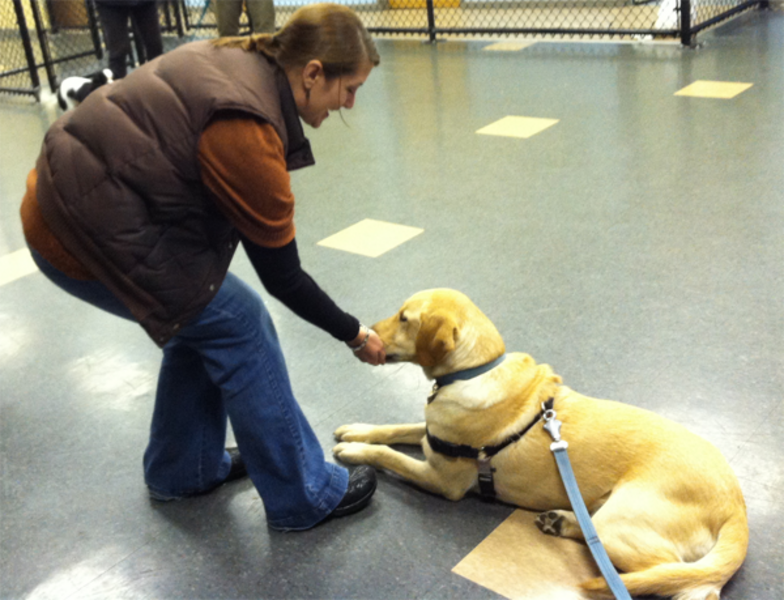Rescue dog: Puppy obedience training classes for dogs and humans
Loading...
Last Tuesday night was the first night of doggie training school for Albie and, well, for us, too. It felt like the first day of kindergarten, especially when we met the first of Albie’s classmates, a pug named Larry. Seriously.
There are four dogs in the class, all beyond the puppy stage (there’s a separate class for them), and Albie was by far the largest at about 75 pounds. Larry and the other two probably weigh 25 pounds – total. So, Albie looked like the overgrown kid, the goofy one trying hard to fit in and who’s always told to play catcher in pick-up baseball games on the sandlot.
We’d been there about two minutes waiting for class to start when Albie decided to urinate on the floor, something he never does at home.
At first I thought he was nervous, but Michelle, our teacher and the proprietor of Turn Around Training, explained that it happens often. By day, the space is a doggie day care, and for some dogs the scents and the urge to mark territory are overpowering.
Still, I felt like the father of the problem kid.
Once class started, Albie focused on Michelle like a laser as she explained how to teach a dog to obey various commands, a technique that relies heavily on food rewards. But there’s a subtle difference between using treats as rewards versus bribes: The former recognizes requested behavior; the latter induces behavior the dog should do on command but refuses to do until you dangle a food bribe. And we learned not to constantly repeat commands such as “sit” or “lie down” in rapid fire succession: you want the dog to have time to work out what you expect of them.
Seeing is believing, and it was astonishing to watch as Albie, Larry, and the others quickly grasped the concepts. The humans were a little slower to catch on.
Michelle explained that you want your dog to respond to your voice commands, not physical cues, so that, for example, if you come home with your arms filled with groceries and can’t gesture, you want the dog to respond to your voice.
But I repeatedly found myself using small gestures or bowing down when telling Albie to sit, which is a no-no. Maybe a small food reward for the humans would be an effective teaching tool.
We also learned some other interesting things, some quite counter-intuitive. For one, we’ve had Albie’s harness – the one that helps reduce his urge to pull on the leash – on backwards.
Second, when I take Albie for walks we invariably encounter other dogs, and it’s impossible to predict how the interaction will go. Sometimes the dogs just give one another a passing sideways glance. At other times, the dogs strain on their leashes like two long lost lovers rediscovering each other in London after the Blitz. Sometimes there’s aggressive play and at other times some real hostility.
But telling the difference between rough play and a fight, at least to our untrained eyes, can be tough. That’s why there’s a tendency when the dogs begin to get aggressive to tighten up on the leash. Michelle advised the opposite. Loosen up on the leash or let go: It reduces the chances the dogs will fight. Tight restraint tends to escalate aggressive behavior.
There are five more classes to go, by which time I expect to be a very well-trained companion for Albie. But Albie will always be the coolest kid in the class.
The Christian Science Monitor has assembled a diverse group of the best family and parenting bloggers out there. Our contributing and guest bloggers are not employed or directed by the Monitor, and the views expressed are the bloggers' own, as is responsibility for the content of their blogs.








